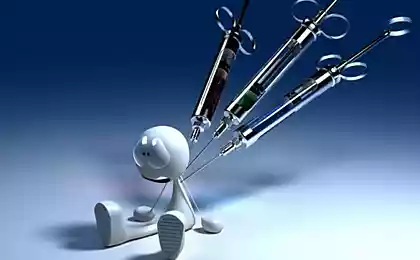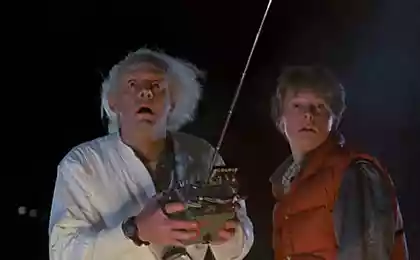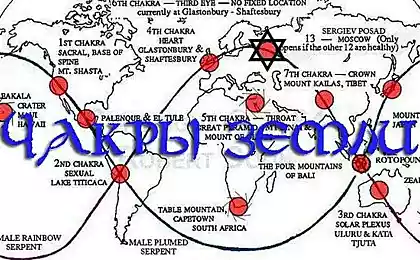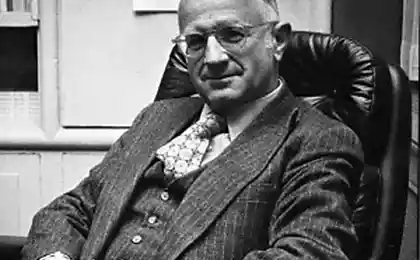1241
10 historical facts proving that you are lucky to live in an era of modern medicine!
Admit it, every trip to the doctor - that is to say, not the best pastime In addition, we also know ourselves: is not much pripechet - not going anywhere, prevention for wimps. If you're used to criticize the health care system and do not trust doctors, preferring to put a diagnosis, it is suggested to reflect. Previously won all doctors did not wash his hands, and during surgery to cauterize the wounds with boiling oil. Presented? Br-r, I would not want to live in the Middle Ages, to put it mildly ...
Sushruta: plastic surgeon of ancient India.
Medicine Ancient India was advanced in many areas, including in the field of plastic surgery. Around the VI-V centuries. BC. e. (exact date unknown) in the territory of a powerful ancient state physician Sushruta lived, whom many consider the "father of plastic surgery." As evidenced by some sources, he is specialized in the rhinoplasty (studying ways to restore otstutstvie nose or correction of its parts). Also credited with his hand treatise Sushruta Samhita, which collected all the knowledge of ancient India in the field of medicine (of more than 1000 diseases).
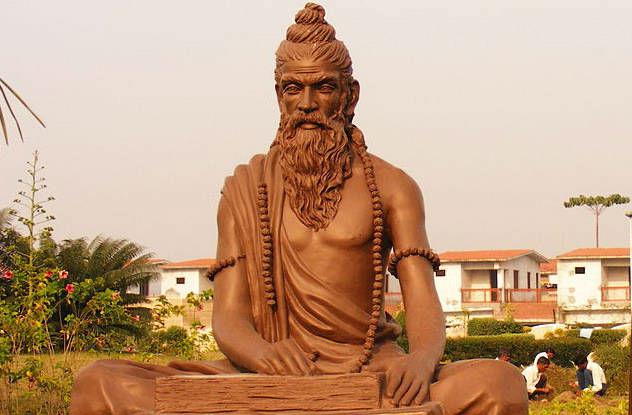
Ephraim Makdaueell: savior President.
This American doctor has become known to the world thanks to the two cases. The first is the successful removal of stones from the bladder 17-year-old boy named James Polk. Yes, that's right, it's not a coincidence: McDowell saved the life of someone else is not, and the future president of the United States! The second case was no less interesting: McDowell was able to remove the tumor 20-foot ovary in women who are pregnant everyone thought. At the time of surgery she was 47 years old. Jane Crawford, a happy patient genius doctor, lived to 79 years.

Claudius Galen: that my body to you?
This name was quite well known in ancient Greece. Most of his scientific work was devoted to the structure of the human body. Galen wrote his treatises on the basis that he had found at autopsy of the dead animals. Understandably, the findings and conclusions were not always accurate and correct, but it was his medical opinion enjoyed for centuries. Even after many centuries, his work and remains one of the most significant publications in anatomy. By the way, Galen has long been a personal imperial physician.

Jean-Dominique Larrey: first aid on the battlefield.
A Frenchman named Jean-Dominique Larrey considered the first military surgeon, an outstanding innovator of military surgery. It was his idea to place a special tent right on the battlefield. Before that, all wounded soldiers were transported to hospitals, which are often located quite far from the front line, because of which the lion's share of the victims died in another way. Named Larry came up with a system of transporting wounded soldiers called "flying hospitals" (it was a special horse-drawn carriages, which were used only for this purpose). At one time he was the chief surgeon of Napoleon's army.

Ignaz Semmelweis: Wash hands with soap and water!
The modern world is grateful to the Hungarian obstetrician at least for the fact that he taught doctors to wash their hands and became one of the founders of aseptic technique. The fact that it Semmelweis found that infection between the hands and puerperal fever there is a direct link. He insisted that doctors wash their hands carefully before delivery, which reduced the percentage of occurrence of childbed fever from 18% to 1%.

George Geyvard: first amputation under anesthesia
William Morton still in 1846 invented the ether anesthesia, after which doctors began to look for ways to use it. This process lasted for a long time, because Morton did not want to share with the rest of the main active component of anesthesia. Soon Morton had to admit that the basis of his invention he used sulfuric ether. This allowed George Geyvardu successfully carry out an operation to amputate his legs 21-year-old patient Mohan Alice (she had tuberculosis of bones).

Jean Sivial: first invasive surgery
In ancient times, until the beginning of the XIX century the stones from the kidney was removed by lithotomy. At the same time the doctor makes a surgical incision and removes the stone completely. Understandably, this procedure was quite painful (about any anesthesia it was not even), so many patients died right on the operating table. Jean Sivial made a huge breakthrough in surgery, invented lithotripter. With this tool, able to crush the stone in the kidney of the patient and to remove them through the urethra.

Ambroise Pare Down with wounds pouring boiling oil!
Ambroise Pare (court physician) at one time led the surgery to a new level. Prior to that all operations are performed with the procedure, "cautery" boiling oil. Because of the anesthesia in those years, and no one wanted to, one can only imagine what the patients suffered the torments of hell, often dying right under the surgeon's hands. When Pare during one of the operations ended sunflower oil, he had to somehow get out of the situation. He created a tincture of improvised means: rose oil, egg yolks and turpentine. The pair could not even think that it would be as effective a means, and not only, it is not painful. In addition, Pare went down in history as the first medical doctor who proposed bandage after amputation.

Richard Lower: The first blood transfusion.
Oxford physician Richard Lower specialized in blood transfusion. In 1665 he performed the first successful operation of blood transfusion on animals, and two years later, in 1667 - Blood Transfusion certain sheep Arthur Koga (he even got 20 shillings per transaction!). The patient-volunteer had serious mental illness, and Lower was sure that a blood transfusion will help to cope with it. When this did not happen, ideas Lowery rejected. It took more than a century, when people began again to resort to blood transfusions.

Incredible operation of Louis XIV
The most famous ruler of France Louis XIV had serious health problems. He suffered from headaches, gout, periostitis, and (according to some historians) diabetes. What did not tried the king (even enemas and poultices), all methods were futile. Then the situation was saved by the barber of King Charles Francois Felix. This sharp-witted man came up with an ingenious method of how to relieve the suffering of the King. Before you apply a revolutionary method of removing unpleasant problem with the scraper and spreader to Louis XIV, the similar operations are tried by 75 volunteers from the French prisons. After the operation was successful, many court asked them to do the same operation as the king. Since the company began serious about surgery as an important grown medicine.
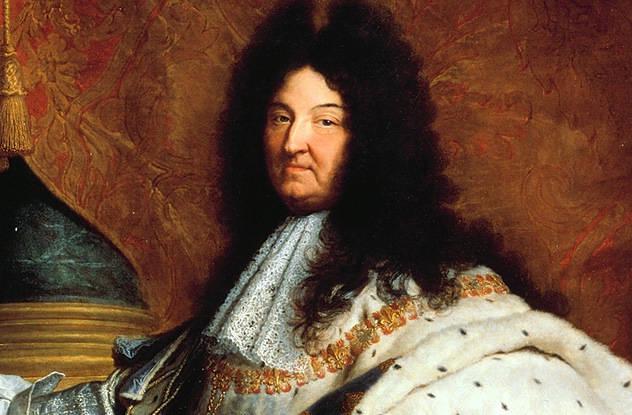
Yes, many of these facts become a real discovery for me, and the story of Louis XIV at all shocked. Even it is impossible to imagine what flour before experienced by patients during operations! So you should be happy that you live in a progressive plastic surgery, anesthesia and modern methods of treatment and operation. Share this fascinating post to another, because it is unlikely to guess how the operation took place in ancient times.
listverse.com/2015/05/10/10-bizarrely-noteworthy-medical-milestones-throughout-history/
Sushruta: plastic surgeon of ancient India.
Medicine Ancient India was advanced in many areas, including in the field of plastic surgery. Around the VI-V centuries. BC. e. (exact date unknown) in the territory of a powerful ancient state physician Sushruta lived, whom many consider the "father of plastic surgery." As evidenced by some sources, he is specialized in the rhinoplasty (studying ways to restore otstutstvie nose or correction of its parts). Also credited with his hand treatise Sushruta Samhita, which collected all the knowledge of ancient India in the field of medicine (of more than 1000 diseases).

Ephraim Makdaueell: savior President.
This American doctor has become known to the world thanks to the two cases. The first is the successful removal of stones from the bladder 17-year-old boy named James Polk. Yes, that's right, it's not a coincidence: McDowell saved the life of someone else is not, and the future president of the United States! The second case was no less interesting: McDowell was able to remove the tumor 20-foot ovary in women who are pregnant everyone thought. At the time of surgery she was 47 years old. Jane Crawford, a happy patient genius doctor, lived to 79 years.

Claudius Galen: that my body to you?
This name was quite well known in ancient Greece. Most of his scientific work was devoted to the structure of the human body. Galen wrote his treatises on the basis that he had found at autopsy of the dead animals. Understandably, the findings and conclusions were not always accurate and correct, but it was his medical opinion enjoyed for centuries. Even after many centuries, his work and remains one of the most significant publications in anatomy. By the way, Galen has long been a personal imperial physician.

Jean-Dominique Larrey: first aid on the battlefield.
A Frenchman named Jean-Dominique Larrey considered the first military surgeon, an outstanding innovator of military surgery. It was his idea to place a special tent right on the battlefield. Before that, all wounded soldiers were transported to hospitals, which are often located quite far from the front line, because of which the lion's share of the victims died in another way. Named Larry came up with a system of transporting wounded soldiers called "flying hospitals" (it was a special horse-drawn carriages, which were used only for this purpose). At one time he was the chief surgeon of Napoleon's army.

Ignaz Semmelweis: Wash hands with soap and water!
The modern world is grateful to the Hungarian obstetrician at least for the fact that he taught doctors to wash their hands and became one of the founders of aseptic technique. The fact that it Semmelweis found that infection between the hands and puerperal fever there is a direct link. He insisted that doctors wash their hands carefully before delivery, which reduced the percentage of occurrence of childbed fever from 18% to 1%.

George Geyvard: first amputation under anesthesia
William Morton still in 1846 invented the ether anesthesia, after which doctors began to look for ways to use it. This process lasted for a long time, because Morton did not want to share with the rest of the main active component of anesthesia. Soon Morton had to admit that the basis of his invention he used sulfuric ether. This allowed George Geyvardu successfully carry out an operation to amputate his legs 21-year-old patient Mohan Alice (she had tuberculosis of bones).

Jean Sivial: first invasive surgery
In ancient times, until the beginning of the XIX century the stones from the kidney was removed by lithotomy. At the same time the doctor makes a surgical incision and removes the stone completely. Understandably, this procedure was quite painful (about any anesthesia it was not even), so many patients died right on the operating table. Jean Sivial made a huge breakthrough in surgery, invented lithotripter. With this tool, able to crush the stone in the kidney of the patient and to remove them through the urethra.

Ambroise Pare Down with wounds pouring boiling oil!
Ambroise Pare (court physician) at one time led the surgery to a new level. Prior to that all operations are performed with the procedure, "cautery" boiling oil. Because of the anesthesia in those years, and no one wanted to, one can only imagine what the patients suffered the torments of hell, often dying right under the surgeon's hands. When Pare during one of the operations ended sunflower oil, he had to somehow get out of the situation. He created a tincture of improvised means: rose oil, egg yolks and turpentine. The pair could not even think that it would be as effective a means, and not only, it is not painful. In addition, Pare went down in history as the first medical doctor who proposed bandage after amputation.

Richard Lower: The first blood transfusion.
Oxford physician Richard Lower specialized in blood transfusion. In 1665 he performed the first successful operation of blood transfusion on animals, and two years later, in 1667 - Blood Transfusion certain sheep Arthur Koga (he even got 20 shillings per transaction!). The patient-volunteer had serious mental illness, and Lower was sure that a blood transfusion will help to cope with it. When this did not happen, ideas Lowery rejected. It took more than a century, when people began again to resort to blood transfusions.

Incredible operation of Louis XIV
The most famous ruler of France Louis XIV had serious health problems. He suffered from headaches, gout, periostitis, and (according to some historians) diabetes. What did not tried the king (even enemas and poultices), all methods were futile. Then the situation was saved by the barber of King Charles Francois Felix. This sharp-witted man came up with an ingenious method of how to relieve the suffering of the King. Before you apply a revolutionary method of removing unpleasant problem with the scraper and spreader to Louis XIV, the similar operations are tried by 75 volunteers from the French prisons. After the operation was successful, many court asked them to do the same operation as the king. Since the company began serious about surgery as an important grown medicine.

Yes, many of these facts become a real discovery for me, and the story of Louis XIV at all shocked. Even it is impossible to imagine what flour before experienced by patients during operations! So you should be happy that you live in a progressive plastic surgery, anesthesia and modern methods of treatment and operation. Share this fascinating post to another, because it is unlikely to guess how the operation took place in ancient times.
listverse.com/2015/05/10/10-bizarrely-noteworthy-medical-milestones-throughout-history/
27 great quotes by Ray Bradbury, who lift straight to the stars. Thanks for all!
15 mother's advice that seemed to us unholy nonsense, but it was true. Vital!

